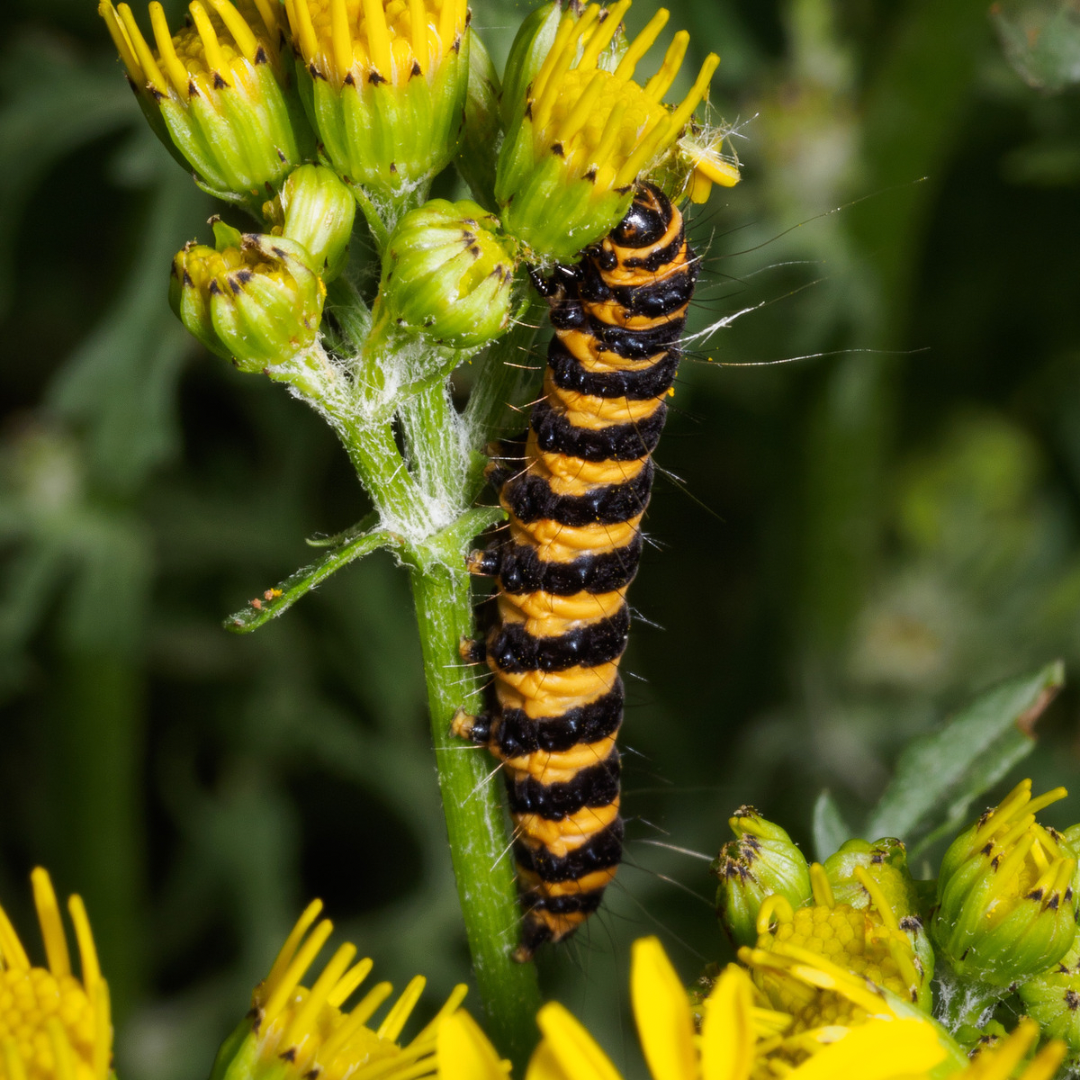”Cinnabar Caterpillar
GeorgeFlavour Fred
(Tyria jacobaeae)
You’ll spot these right now mostly on Common Ragwort (Jacobaea vulgaris) which is known as a toxic plant, being poisonous to horses and other cattle. It will also give you a rash when being handled.
For me I see ragwort as the home to many insects including the cinnabar caterpillar. The caterpillars are laid by the cinnabar moth as eggs on the underside of the leaves becoming larvae (caterpillar). Initially they are eaten up by birds until they eat enough ragwort to take on the toxin in the plant and put it into their extremities. Essentially developing a toxic armour with toxic hairs, and it works well!
As the plant is a finite food source they climb the diminishing dinner and in situations where large populations are on one plant, due to the low amounts of available food cannibalism can occur.
It takes a month or so for the caterpillars to develop fully. After which they head to the ground to pupate. Safely in cocoons over winter they complete their metamorphosis the following spring emerging as the beautiful black and red adults.
The number are dwindling due to ragwort being treated as a dangerous weed that gets into the horse and cattle food system by being bailed into hay. Its a tough one as its a plant that needs to be removed from the food system and is very difficult to do so with machinery. Last year there were a few storied of communities helping out their local farms doing this by hand.



